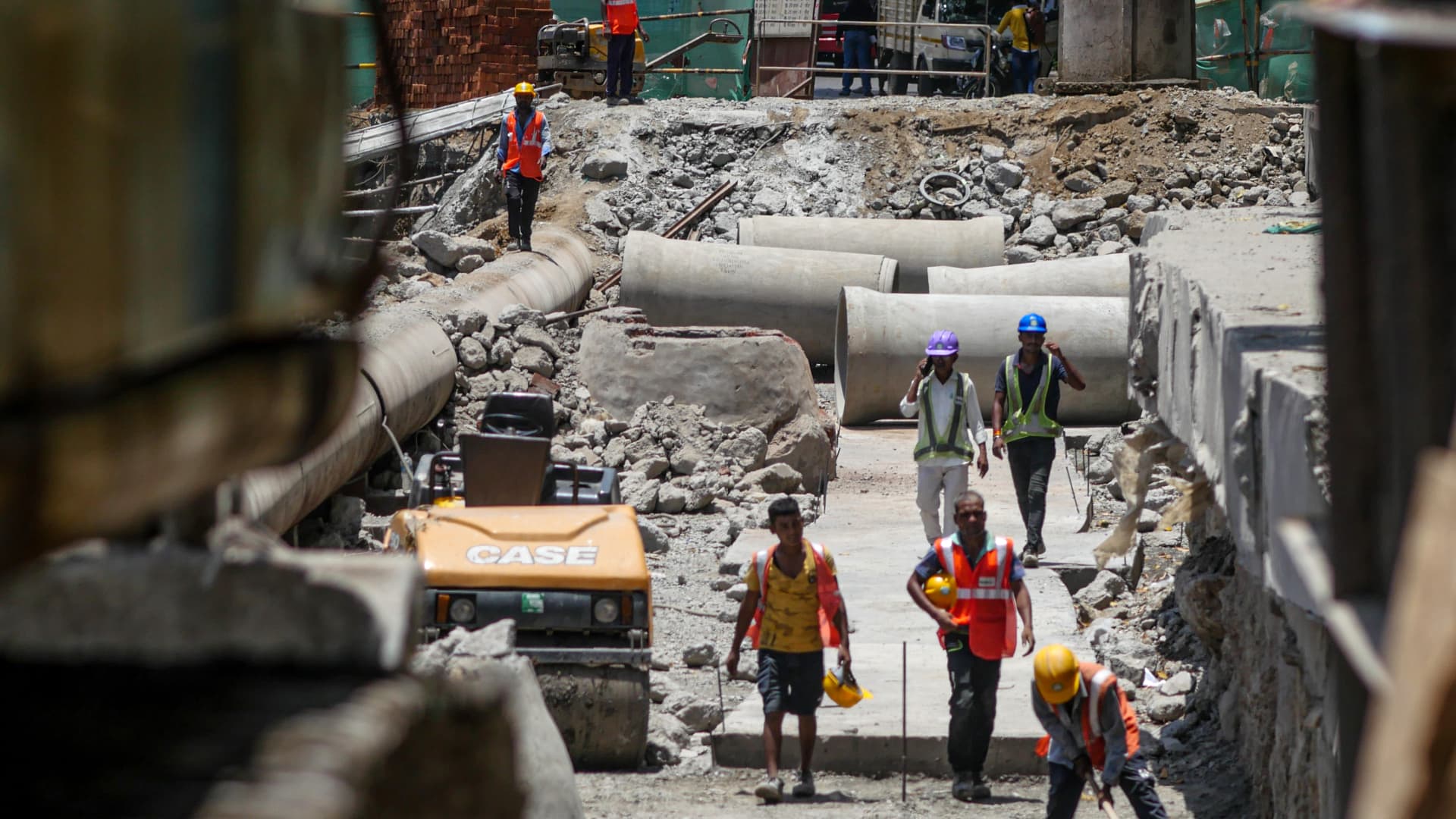Construction workers in Mumbai, India, on June 5, 2024.
Bloomberg | Bloomberg | Getty Images
India’s economy expanded by just 5.4% in its second fiscal quarter ending September, well below estimates by economists and close to a two-year low.
The print follows 6.7% growth over the previous quarter and is the lowest reading since the last quarter of 2022. Economists polled by Reuters had forecast growth of 6.5% for the period, while the Reserve Bank of India expected an expansion of 7%.
The country’s statistics agency noted sluggish growth in manufacturing and the mining sector.
The yield on the country’s 10-year sovereign bond quickly sank to 6.74% after the release, from around 6.8%.
The weak GDP reading could potentially affect the country’s interest rate trajectory, with the RBI’s Monetary Policy Committee scheduled to meet between Dec. 6-8. Markets watchers had been expecting an eleventh consecutive pause by the RBI, with the repo rate currently at 6.5%.
Speaking to CNBC “Squawk Box Asia” before the GDP release, Alicia Garcia Herrero, chief Asia-Pacific economist at Natixis, forecast that India’s economy will slow but not “collapse” in 2025.
She said that Natixis has a 2025 growth forecast of 6.4% for India — without clarifying whether this refers to the fiscal or calendar year — but added that the print could also come in as low as 6%, which she qualified as “not a bit problem, but it’s not welcome.”
Separately, the RBI projected that GDP growth for the 2024 fiscal year ending in March 2025 will reach a higher 7.2%.
Asked how India’s economy will fare under President-elect Donald Trump’s second presidency, Herrero said the country is “not really at the center of the reshuffling of the value chain that China has been conducting.”
“If I were the Trump administration, I would start [looking at tariffs for] Vietnam. That’s a much more obvious case,” she noted.
She said that China could make products in India for Indian consumption instead of exporting products globally — and as such, New Delhi could avoid getting hit by tariffs.






